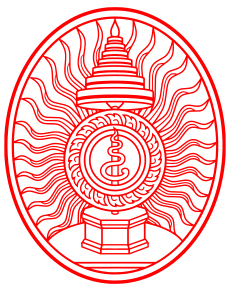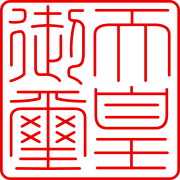Privy seal facts for kids
A privy seal is like a special personal stamp used by a king or queen. It's for official papers that are important to the ruler, but not as important as documents that use the "Great Seal." Think of it as a personal signature, but in the form of a stamp!

Contents
The Privy Seal of England
The Privy Seal in England has a long history, going all the way back to the time of King John. At first, it was thought to be the seal that traveled with the king himself. Meanwhile, the Great Seal had to stay in a special office called the Chancery.
Over time, the Privy Seal became used for more things. A new, even more personal seal called the "Signet" took its place for the king's private papers. Eventually, a law in 1884 made the Privy Seal less important. It meant that documents no longer needed the Privy Seal to be official.
The Privy Seal of Scotland
There was also a separate Privy Seal for Scotland. This seal existed at least since the reign of King Alexander III.
When England and Scotland joined to form Great Britain in 1707, a special agreement called the Treaty of Union said that the Scottish Privy Seal could continue to be used. It also said that the seals could be changed to fit the new union.
The Scottish Privy Seal was last used in 1898. It was used to officially appoint a professor at the University of Glasgow. Even though it hasn't been used since, it has never been officially removed. The person who was in charge of the seal, called the Keeper of the Privy Seal, hasn't been replaced since 1922.
The Privy Seal of Ireland
The "signet or privy seal" of the Kingdom of Ireland was a single seal. This was different from England and Scotland, where the "signet" was a separate seal kept by a different official.
In Ireland, special documents called "Fiants" were issued using the privy seal. These Fiants gave permission for the Lord Chancellor of Ireland to issue even more important documents, known as "letters patent," using the Great Seal of Ireland.
Keepers of the Irish Privy Seal
The person in charge of the Irish Privy Seal was called the Keeper. Here's a quick look at who held this important job:
| Dates | Holder | Notes |
|---|---|---|
| 1560–1795 | Secretary of State for Ireland | This job was held by the Secretary of State for Ireland. |
| 22 June 1795 – 1797 | Edmund Pery, Lord Glentworth | He held the role while Thomas Pelham was Secretary of State. |
| 24 July 1797–1801 | Robert Stewart, Lord Castlereagh | He also became the Chief Secretary for Ireland in 1798. |
| 12 June 1801–8 May 1829 | Charles Abbot, later 1st Baron Colchester | He became Chief Secretary and then Secretary of State. He kept the Keeper role even after becoming Speaker of the UK Parliament. |
| 8 May 1829–19 October 1922 | Chief Secretary for Ireland | From this time on, the Chief Secretary for Ireland automatically became the Keeper of the Privy Seal. |
The Privy Seal of Japan
The Privy Seal of Japan is the official seal of the Emperor of Japan. It's used on many government papers, but it's different from the "State Seal of Japan."
The first Privy Seal in Japan was made from copper during the Nara period (a long time ago!). After a big change in Japan called the Meiji Restoration, a new seal was made from stone in 1868. The seal used today was made from gold in 1874.
Since 1945, the Privy Seal has been kept by the Chamberlain of Japan. Before that, there was a special job called the Lord Keeper of the Privy Seal. This person was a close advisor to the Emperor.


